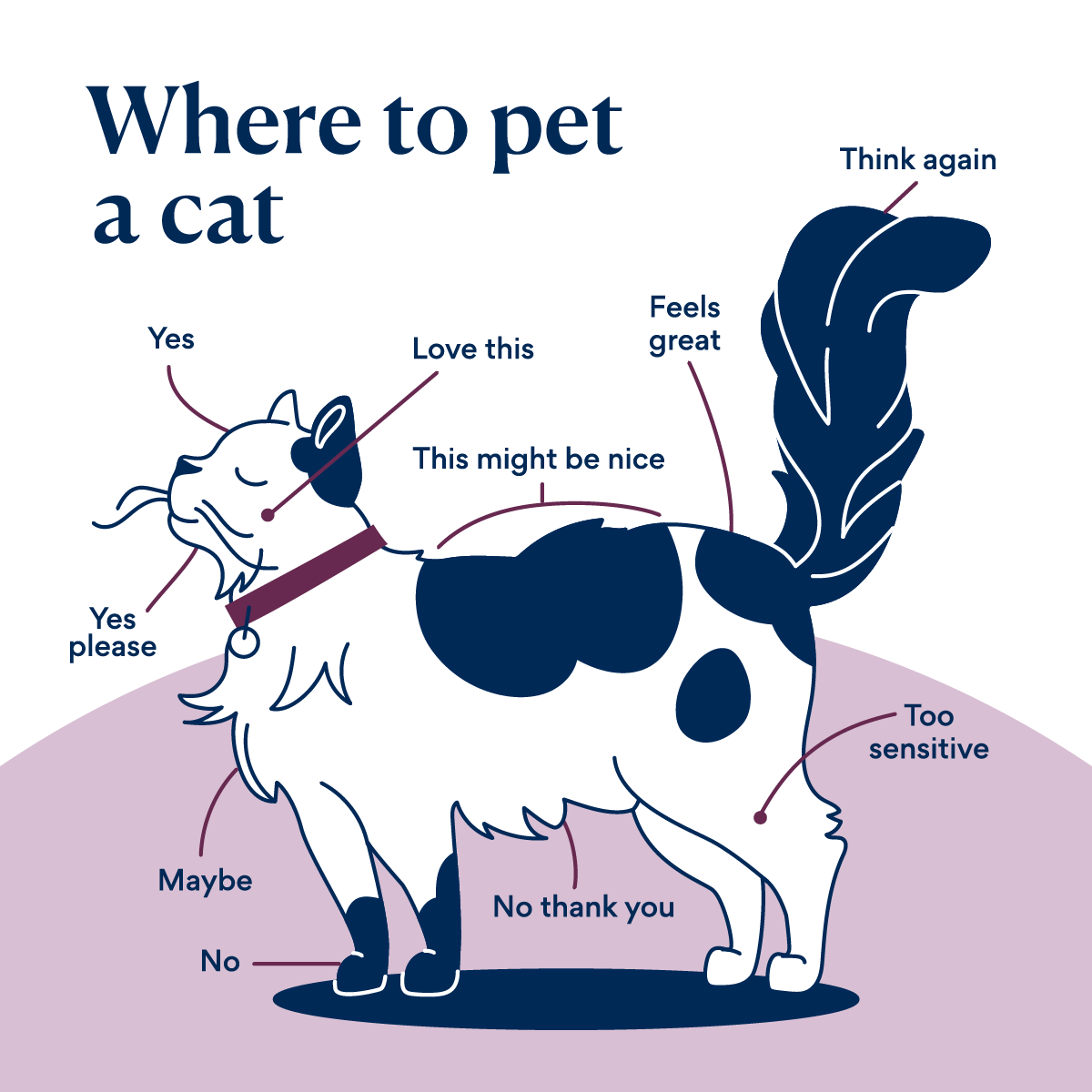How to Pet a Cat Correctly
NiseriN/iStock / Getty Images Plus via Getty Images
Petting your cat is an important bonding experience for both of you. In fact, a study found that petting cats for even 10 minutes can reduce the amount of cortisol, a hormone associated with stress, that your body produces.
Although petting is a positive experience for both the cat and pet parent, there are proper and improper ways to pet a cat—and improper petting can cause a cat to become anxious, demonstrate aggressive behavior, and avoid further contact with you. Because of this, it’s important to understand how to pet a cat correctly.
Do Cats Like To Be Pet?
The first step of petting a cat is determining whether a cat wants to be pet. Some cats are more physically affectionate with their people than others. But some may prefer to sit near their people rather than be pet or held.
Your cat will indicate interest in petting with some clear body language signals:
-
He may approach you on his own
-
His body should be loose and relaxed as he walks directly toward you
-
The ears will be forward-facing and upright, with his tail held high and curled at the end in a question mark-like shape
-
He may rub his chin, cheeks, or forehead on your hand
If a cat is giving you these signals, it’s an invitation for petting. If your cat is not ready to be pet, he will demonstrate his feelings with similarly clear body language.
-
When you extend your hand toward him, he may avoid interacting with you or run away and hide
-
Alternatively, his body may be angled away from you and held in a rigid pose
-
You may see his ears flat against his head, his pupils dilated, and his tail held low, swishing back and forth
-
An unwilling cat may also growl or hiss when engaged for petting
-
He may try to swipe at you or bite your hand
If your cat is showing any of these negative signals, it is important to stop any attempts to pet him for the moment. He may be ready for petting at another time if you give him space to decompress.
How To Pet a Cat
When you see a cat you’d like to pet, follow some general guidelines.
1. Hold Out Your Hand
It’s best to allow the cat to sniff your hand and rub against it first before continuing any other petting motions. This will confirm the cat is in the mood for petting.
2. Begin Gentle Petting
When your cat signals he would like to be pet, begin smooth, gentle petting or soft scratching motions—rather than sharp, firm pats—along his chin, cheeks, back, and toward the base of his tail. These areas are generally where cats like to be pet.
Some cats may enjoy having their foreheads scratched due to the presence of scent glands, but this may be reserved for people they know. Petting on the head may be perceived as threatening to some cats.
3. Monitor Body Language and Vocalizations
You will know your cat is enjoying being pet when you remove your hand and he continues to rub against it. You may also hear him purring and continuing to interact with you with loose body posture, perked ears, and a tail held high.
It’s important to be mindful of body language when petting a cat. For example, some cats may enjoy being pet on their backs, but if they’re pet there for too long, they may become overstimulated and begin acting aggressively. It’s important to only pet a cat where he enjoys it—and only for as long as he enjoys being pet there.
4. Avoid Any Painful Areas or Stressors
Avoid petting a cat in an area where he’s showing signs of pain or discomfort, such as a neck that is painful from arthritis or a belly that is painful from recent surgery. You also should not pull your cat out of hiding or bring him into a room to pet him when he’s resting or having alone time, as this may cause him stress.
Where Do Cats Like To Be Pet?

When petting a cat, it’s important to be mindful of the areas where cats tend to prefer being pet—and the areas cats do not often enjoy being pet.
Where To Pet Cats
Typically, cats enjoy being pet on the cheeks, chin, forehead, and base of the tail. These are preferred areas for many cats because these areas contain scent glands that release pheromones. Cats often rub each other in these areas when forming positive social relationships.
Some cats may also enjoy being pet on the nape of the neck and areas of the back, as they can develop itches here that are hard for them to scratch on their own.
Where NOT To Pet Cats
By contrast, there are several areas to avoid when petting a cat (unless you know the cat well and he has a personal preference for these areas).
Most cats do not like being pet on their stomach, chest, legs, paws, or tail. The stomach and chest are vulnerable areas for cats, so when you attempt to pet a cat in those spots, he feels like he’s being threatened. Similarly, the legs, paws, and tail are sensitive areas, so he may not enjoy the sensation of strokes or scratches there.
If it's your first time meeting a cat, it’s best to stay away from these areas until you know the cat better and he feels more comfortable around you.
By following these basic principles, it’s possible to create a petting experience that is rewarding both for you and your fur baby. If your cat is consistently becoming aggressive during petting sessions, consult with a veterinarian to determine if there are any medical conditions or behavioral concerns to address.
